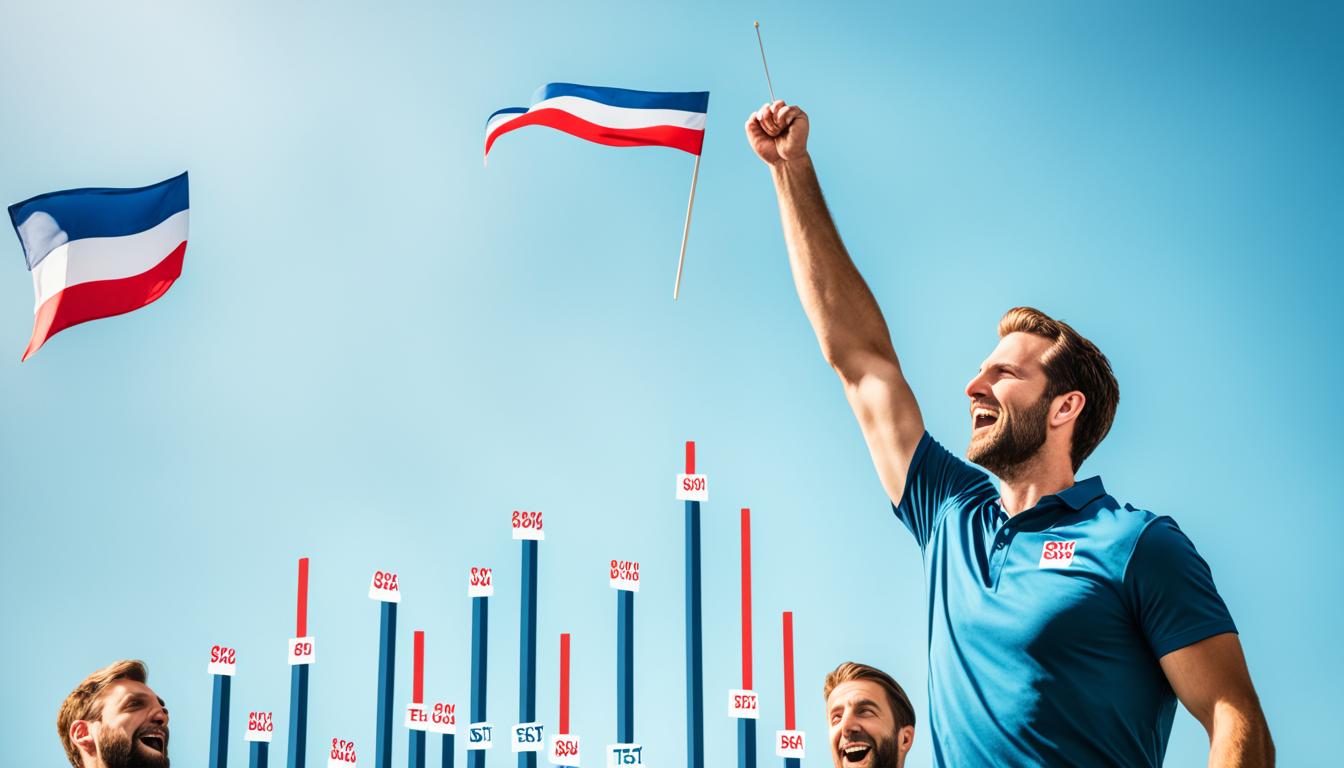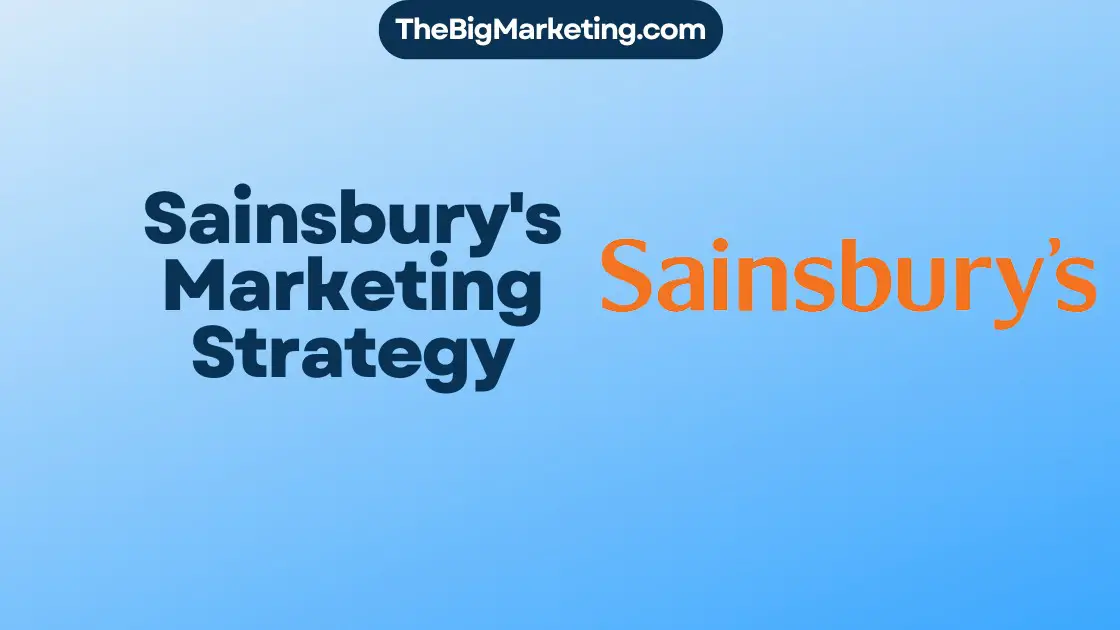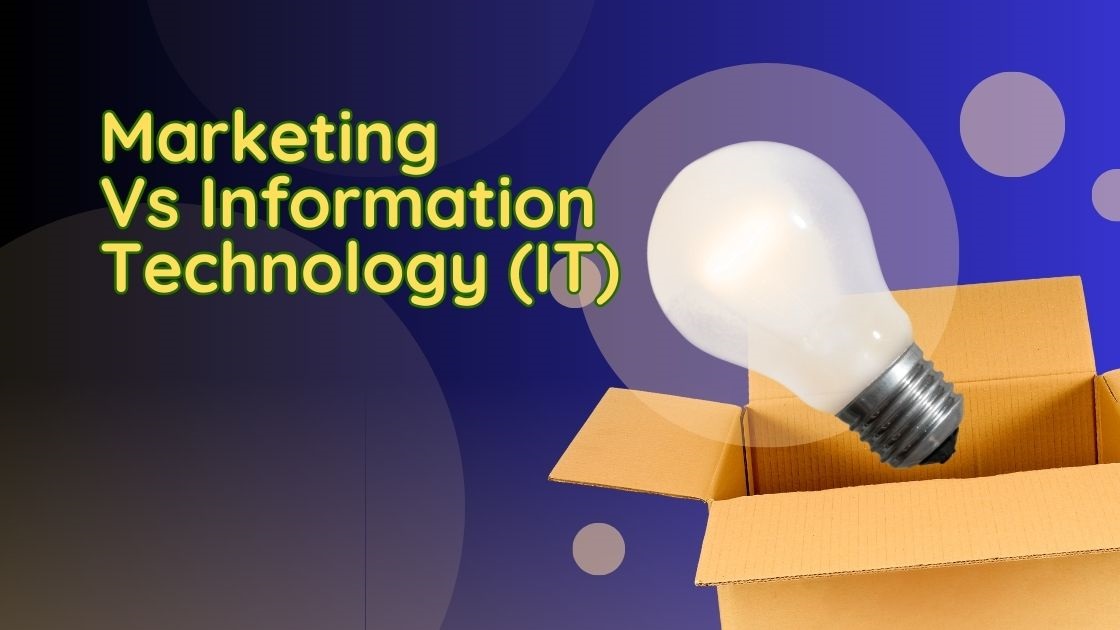Marico Limited, a leading consumer goods company in India specializing in health, beauty, and wellness, has implemented effective marketing strategies and techniques to promote its brands in the highly competitive FMCG industry. With a strong presence in over 25 countries, Marico has successfully targeted niche markets, diversified its product lines, and emphasized the unique qualities of its offerings, including popular brands like Parachute, Saffola, and Hair & Care.
Marico has adopted innovative approaches to enhance its brand presence and engage with consumers through digital marketing strategies. By utilizing social media platforms and employing SEO techniques, the company has effectively communicated its brand message and connected with its target audience, contributing to its overall success in the market.
In this case study, we analyze Marico’s marketing strategy, explore its innovative tactics and campaigns, and shed light on the factors that have propelled the company to the forefront of the FMCG industry.
Key Takeaways:
- Marico Limited is a leading consumer goods company specializing in health, beauty, and wellness.
- The company has successfully implemented marketing strategies and techniques to promote its brands.
- Marico emphasizes targeting niche markets, diversification of product lines, and highlighting the unique qualities of its offerings.
- The company has leveraged digital marketing strategies such as social media and SEO to enhance brand presence and engage with consumers.
- Marico’s success in the FMCG industry serves as a case study for developing effective marketing plans in the consumer goods segment.
The Importance of Travel in Marico’s Marketing Strategy
One of the key factors that shaped Marico’s successful marketing strategy was the recognition of the importance of travel. During a trip to the USA, Marico’s founder, Mr. Harsh Mariwala, was inspired by the diverse range of consumer brands and their potential in the Indian market.
Observing the success of various consumer goods in the USA, Mr. Mariwala realized the untapped opportunities that existed in India. This realization laid the foundation for the development of two iconic products in the Indian consumer goods industry: Parachute coconut oil and Saffola.
Marico leveraged the concepts of right marketing, seductive advertising, and eye-catching packaging to effectively capture the attention of the Indian market. By understanding the consumer preferences and market dynamics, Marico was able to tailor its products and marketing campaigns to meet the evolving needs of the Indian consumers.
Marico Marketing Strategy: Travel Insights
Mr. Mariwala’s travel experiences allowed him to gain valuable insights into the global consumer goods industry, which he successfully applied to the Indian market. This included understanding the importance of product positioning, packaging design, and effective advertising strategies.
By incorporating these travel-derived insights into Marico’s marketing strategy, the company was able to establish a strong presence in the Indian market. The travel experiences served as a catalyst for innovation and a source of inspiration for Marico’s marketing campaigns.
The image above represents the essence of Marico’s travel-inspired marketing strategy, emphasizing the company’s ability to understand and adapt to the evolving consumer needs and preferences.
Benefits of Travel in Marketing Strategy
Travel plays a pivotal role in shaping marketing strategies for consumer goods companies like Marico. The exposure to different cultures, product offerings, and marketing techniques enables companies to gain a broader perspective and tap into new ideas and opportunities.
Some notable benefits of integrating travel into marketing strategies include:
- Market Insights: Travel provides firsthand exposure to diverse markets, helping companies understand consumer behavior, preferences, and trends.
- Inspiration for Innovation: Experiencing different cultures and products sparks creativity and innovation, allowing companies to develop unique and effective marketing campaigns.
- Competitive Edge: By staying updated on global market trends, companies can gain a competitive edge by introducing cutting-edge products and strategies in their local markets.
- Expanded Networks: Traveling enables companies to forge connections with industry experts, potential partners, and influencers, leading to new opportunities for collaboration and growth.
In conclusion, Marico’s recognition of the importance of travel in shaping its marketing strategy has been instrumental in its success. By leveraging travel experiences to gain market insights, inspire innovation, and develop a competitive edge, Marico has solidified its position as a leader in the Indian consumer goods industry.
Overcoming Family Challenges in Marico’s Marketing Journey
Marico, being a family business, encountered unique challenges that often arise in such situations. The second generation of Marico consisted of multiple siblings, presenting potential complications in decision-making and management. Internal conflicts and disputes within a family business can disrupt operations or even lead to its dissolution. However, Mr. Harsh Mariwala, the visionary founder of Marico, effectively addressed these challenges and charted a path to success.
Through a combination of patience, respect, and compelling arguments, Mr. Mariwala managed to establish Marico as an independent entity separate from the parent company. This decision allowed the company to fully focus on its marketing strategy and drive growth in the competitive FMCG industry. By deftly navigating the intricacies of family dynamics and advocating for what is best for the business, Marico overcame these obstacles and flourished.
This harmonious resolution enabled Marico to develop and execute its marketing strategy with clarity and purpose. With streamlined decision-making processes and a unified vision, Marico was able to invest resources strategically, innovate, and adapt to changing market dynamics. By capitalizing on their family’s entrepreneurial spirit and shared values, Marico not only survived but thrived, carving a prominent place for itself in the FMCG industry.
Overcoming family challenges in Marico’s marketing journey exemplifies the importance of effective communication, mutual respect, and a long-term vision. The success of Marico’s marketing strategy speaks volumes about the company’s ability to overcome obstacles and build a strong foundation for sustainable growth.
| Challenges | Actions Taken | Outcomes |
|---|---|---|
| Dissension among siblings | Open lines of communication, respectful discussions, mediation | Successful separation of Marico from parent company, independent growth |
| Disagreements over business direction | Engage in constructive dialogue, articulate the benefits of marketing strategy | Unified vision, focused marketing efforts, increased market share |
| Lack of clarity in decision-making | Establish clear guidelines, assign responsibilities, empower leaders | Streamlined decision-making, efficient resource allocation |
| Risk of conflicts affecting brand reputation | Strong emphasis on professionalism, respect, and ethical conduct | Enhanced brand image, increased consumer trust |
Competing against Hindustan Lever in Marico’s Marketing Journey
Marico faced intense competition from Hindustan Lever, a formidable player in the coconut oil market. Hindustan Lever employed aggressive tactics, including price-cutting, acquiring small brands, heavy marketing, and spreading rumors about Marico’s acquisition. These challenges posed a threat to Marico’s market position and required strategic maneuvering to overcome.
However, Marico responded with a well-crafted competitive strategy that enabled it to endure the competition and maintain its stronghold in the market. One of the key aspects of Marico’s approach was highlighting the superior quality and fragrance of its products compared to Hindustan Lever’s offerings. Marico effectively communicated these unique selling points to consumers through various promotional activities, creating differentiation in the minds of the target audience.
Another crucial factor in Marico’s success was its deep market analysis and consumer insights. The company’s extensive research efforts over the years provided valuable data on consumer preferences, trends, and demands. Leveraging this knowledge, Marico tailored its marketing strategies and product offerings to meet the specific needs of the target market, ensuring that its products stood out in the highly competitive landscape.
Marico’s ability to counter Hindustan Lever’s aggressive tactics through strategic communication and leveraging consumer insights exemplifies the effectiveness of its competitive strategy. By consistently delivering superior products and effectively engaging with consumers, Marico not only defended its market share but also expanded its presence in the face of fierce competition.
The Power of Mentorship in Marico’s Marketing Success
Marico’s journey is a testament to the power of having trustworthy mentors and advisors. Mr. Harsh Mariwala surrounded himself with individuals who provided guidance, support, and valuable insights. These mentors not only directed him in the right direction but also supported his decisions, contributing to Marico’s marketing success. The importance of mentorship is a key lesson from Marico’s marketing strategy and highlights the value of having experienced individuals in the industry.
Mentors and advisors play a crucial role in shaping the marketing strategies of companies like Marico. Their wealth of knowledge and industry experience provide valuable perspectives that help navigate challenges and make informed decisions. By leveraging the guidance and mentorship of industry veterans, Marico was able to refine its brand promotion methods and stay ahead of the competition.
One notable mentor who played a significant role in Marico’s success is Mr. Harsh Mariwala’s father, Mr. Ramkrishna Mariwala. As the founder of the Mariwala Group, he laid the foundation for the family business and imparted valuable business acumen to his son. Mr. Ramkrishna Mariwala’s mentorship provided a solid framework for Marico’s marketing strategy, ensuring the company’s sustainable growth and market leadership.
Marico also benefited from external mentors who offered fresh perspectives and unconventional marketing ideas. These mentors helped Marico think outside the box and explore innovative brand promotion methods that resonated with consumers. By embracing mentorship in marketing, Marico was able to create impactful campaigns, build brand loyalty, and expand its customer base.
The Role of Mentorship in Marketing Strategy Development
Mentorship in marketing goes beyond acquiring theoretical knowledge. It involves learning from real-world experiences, honing practical skills, and developing a strategic mindset. Mentors provide guidance on various aspects of marketing, such as consumer behavior analysis, market trends, branding techniques, and digital marketing strategies.
Through mentorship, marketing professionals gain invaluable insights into the industry, learning from the successes and failures of their mentors. This knowledge transfer helps in developing a well-rounded marketing strategy that aligns with the company’s goals and target audience.
Another crucial aspect of mentorship in marketing is networking. Mentors often have extensive networks in the industry, which can open doors to new opportunities, collaborations, and partnerships. By leveraging these connections, companies like Marico can reach wider audiences, expand market reach, and forge strategic alliances.
In conclusion, Marico’s marketing success can be attributed in part to the power of mentorship. By surrounding themselves with experienced mentors and advisors, Marico’s leadership was able to gain valuable insights, hone their marketing skills, and develop effective brand promotion methods. The mentorship culture within Marico played a significant role in shaping the company’s marketing strategy and establishing it as a leader in the FMCG industry.
Saffola’s Marketing Strategies and Campaigns
Saffola, the flagship brand of Marico, has implemented successful marketing strategies and campaigns to establish its presence in the market. The brand has transitioned from being a curative to a preventive heart-care edible oil, aligning its communications with this positioning. By emphasizing its heart-friendly properties, Saffola has effectively communicated the health benefits of its products to consumers.
The brand’s marketing taglines, such as “Life Insurance for Heart” and “Swasth Parivaar Ke Dil Ki Dhadkan,” have resonated with the target audience and reinforced Saffola’s commitment to heart health. These taglines not only evoke an emotional connection but also highlight the preventive nature of Saffola’s products, appealing to health-conscious consumers.
Saffola has also utilized fear marketing as a promotional strategy, creating campaigns with high recall value. By raising awareness about the health risks associated with unhealthy cooking oils, Saffola has positioned itself as the safer and healthier choice for consumers. Fear marketing has proven to be an effective approach for capturing attention and motivating consumers to take action.
In terms of promotion, Saffola has leveraged both traditional and digital channels. The brand’s advertisements can be seen on television, billboards, and magazines, reaching a wide range of consumers. Additionally, Saffola has embraced digital marketing techniques, utilizing social media platforms, influencer collaborations, and online advertisements to engage with its target audience.
With a well-rounded marketing mix and carefully crafted advertising campaigns, Saffola has successfully built brand awareness and established its position in the market. The brand’s continuous focus on marketing strategies has contributed to its growth and success in the competitive FMCG sector.
Saffola’s Successful Marketing Strategies and Campaigns
| Marketing Strategy | Campaign Highlights |
|---|---|
| Transition to a preventive heart-care edible oil | A shift in positioning to highlight the health benefits of Saffola products |
| Emphasizing heart-friendly properties | Taglines like “Life Insurance for Heart” and “Swasth Parivaar Ke Dil Ki Dhadkan” |
| Fear marketing | Campaigns raising awareness about the health risks of unhealthy cooking oils |
| Utilization of traditional and digital channels | Promotion through television, billboards, magazines, and digital platforms |
The Buyer Persona of Saffola
Saffola, a leading brand under Marico’s marketing strategy, understands the importance of catering to its target customers. By creating a buyer persona, the brand gains valuable insights into the needs and preferences of its audience, enabling them to tailor their marketing strategies and campaigns effectively.
The buyer persona for Saffola is a 25-year-old web developer named Sachin, residing in Mumbai. Sachin is highly motivated to maintain a healthy lifestyle, with goals of losing weight and preparing nutritious meals for his family. He has a keen interest in cooking, fitness, and spending quality time with his loved ones.
Sachin actively seeks information on healthy cooking through multiple platforms, with social media being one of his go-to sources. He values the convenience and accessibility provided by these channels, making them an integral part of his decision-making process.
Understanding Sachin’s motivations, interests, and preferred sources of information enables Saffola to devise targeted marketing strategies to engage and meet the needs of its broader target audience. By crafting content and campaigns that resonate with Sachin, Saffola can capture the attention and loyalty of individuals like him, successfully positioning itself as the brand of choice for health-conscious consumers.
Benefits of Creating a Buyer Persona
- Identifies the target audience’s preferences and needs
- Guides the development of targeted marketing campaigns
- Enhances customer engagement and brand loyalty
- Streamlines product development and innovation
- Improves the overall customer experience
By continually refining and updating its buyer persona based on new data and evolving customer preferences, Saffola ensures that its marketing strategies remain relevant and effective in an ever-changing consumer goods landscape.
The Buyer Persona of Saffola at a Glance
| Persona Name | Age | Occupation | Location | Interests |
|---|---|---|---|---|
| Sachin | 25 | Web Developer | Mumbai | Cooking, Fitness, Spending time with family |
Understanding the buyer persona of Saffola, represented by Sachin, allows Marico to create targeted marketing strategies that resonate with their target audience, enhancing brand awareness and driving consumer engagement.
The Marketing Mix of Saffola
Saffola’s marketing mix plays a pivotal role in the brand’s success. By focusing on the four key elements – product, price, place, and promotion – Saffola has been able to effectively position itself in the market and cater to the needs of its target audience.
Product
Saffola offers a diverse range of products that cater to different consumer preferences and health requirements. The brand’s product portfolio includes oils, oats, ayurvedic products, and protein products. This wide variety allows Saffola to cater to a larger customer base and meet their specific needs. Additionally, Saffola positions its products as high-quality edible oils with heart-friendly properties, appealing to health-conscious consumers who prioritize their well-being.
Price
Saffola positions itself as a premium brand, justifying its higher price point through the superior quality and health benefits of its products. By strategically pricing its offerings, Saffola creates a perception of value and differentiates itself from competitors in the market.
Place
Saffola utilizes a mix of distribution channels to ensure its products are readily available to consumers. The brand has established a strong presence in both traditional retail outlets and e-commerce platforms. This distribution strategy allows Saffola to reach a wider audience and cater to the evolving preferences of consumers who prefer the convenience of online shopping.
Promotion
Saffola employs various promotion strategies to create brand awareness and engage with its target audience. The brand’s marketing campaigns often incorporate fear marketing, highlighting the risks associated with heart diseases and positioning Saffola as a preventive measure. Saffola also leverages traditional marketing channels such as television, print, and outdoor advertising to ensure maximum reach. In recent years, the brand has placed an increasing focus on digital marketing techniques, utilizing social media platforms and influencer collaborations to connect with consumers in a more personalized and interactive way.
The marketing mix of Saffola has played a significant role in the brand’s success. Through a well-crafted product portfolio, strategic pricing, effective distribution strategies, and impactful promotion techniques, Saffola has been able to establish itself as a trusted and preferred brand in the market.
| Element | Description |
|---|---|
| Product | Diverse range of oils, oats, ayurvedic products, and protein products. |
| Price | Premium positioning, justified by superior quality and health benefits. |
| Place | Strong presence in both traditional retail outlets and e-commerce platforms. |
| Promotion | Fear marketing, traditional marketing channels, and increased focus on digital techniques. |
Failed Campaigns of Saffola
While Saffola has implemented successful marketing campaigns, it has also encountered its fair share of failures. Despite careful planning and execution, some products and campaigns did not strike a chord with consumers or achieve the desired impact. These unsuccessful endeavors serve as valuable learning experiences for Saffola and highlight the importance of continuous market analysis, adaptation, and innovation.
One such failed campaign was the introduction of Saffola’s organic cooking oil line. Despite the growing popularity of organic products in the market, Saffola’s organic cooking oil failed to resonate with consumers. The brand misjudged the demand and failed to effectively communicate the unique benefits and value proposition of their organic offering. This setback prompted Saffola to reevaluate their market research methods and realign their product development strategies to better meet consumer expectations.
Another campaign that missed the mark was Saffola’s attempt to target the youth segment with a trendy and youthful messaging. The brand’s marketing team attempted to position Saffola as a lifestyle choice for the younger generation, focusing on factors such as convenience and taste. However, this approach failed to create a connection with the target audience, as the youth segment did not perceive Saffola as relevant to their lifestyle choices. This failure prompted Saffola to delve deeper into consumer insights and develop more comprehensive buyer personas to accurately understand their target audience.
Despite these failures, Saffola’s ability to learn from its mistakes and adapt has been instrumental in its overall success in the industry. The brand’s commitment to continuous improvement and innovation has allowed them to refine their marketing strategies and campaigns, ensuring a stronger connection with their target audience.
Lessons Learned:
- Thorough market analysis and research are essential to accurately identify consumer preferences and demands.
- Effective communication of unique benefits and value proposition is crucial for the success of a product or campaign.
- Understanding and connecting with the target audience through comprehensive buyer personas helps tailor marketing efforts for maximum impact.
- Continuous adaptation, innovation, and improvement are key to overcoming failures and driving long-term success.
In conclusion, Saffola’s failed campaigns have provided valuable insights into the importance of market analysis, communication, consumer understanding, and adaptability in marketing strategies. By learning from these failures, Saffola has been able to refine its brand promotion methods and enhance its overall marketing strategy, which has contributed to its continued success in the competitive consumer goods industry.
Conclusion
Marico’s marketing strategy has played a pivotal role in positioning the company as a leader in the FMCG industry. By targeting niche markets and diversifying its product lines, Marico has successfully captured the attention of consumers and forged a strong brand presence. Overcoming family challenges and countering fierce competition from rivals, such as Hindustan Lever, further showcases the resilience and determination of Marico.
Saffola, the flagship brand of Marico, has excelled in implementing effective marketing strategies and campaigns. Through an in-depth understanding of its buyer persona, Saffola has tailored its marketing efforts to meet the needs of its target audience and establish a loyal customer base.
Marico’s marketing mix, which includes a range of high-quality products, strategic pricing, effective distribution channels, and comprehensive promotional activities, has been key to its growth and expansion. The company has embraced digital marketing strategies to enhance its brand presence and engage with consumers effectively.
Overall, Marico’s marketing strategy serves as a valuable case study for FMCG companies seeking to develop and implement successful marketing plans. By leveraging the power of strategic targeting, competitive analysis, and a customer-centric approach, companies can drive success in the dynamic and competitive consumer goods industry.







